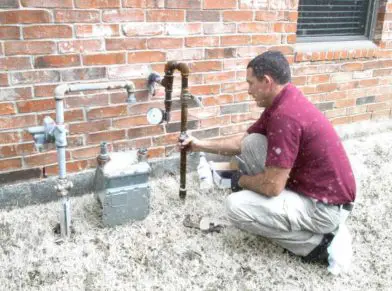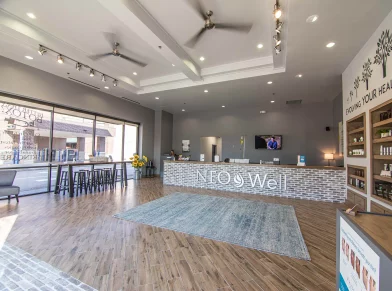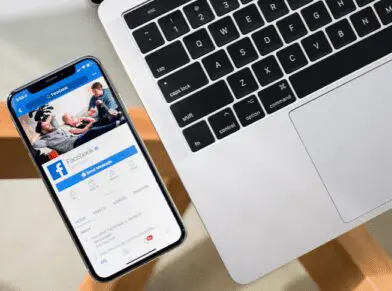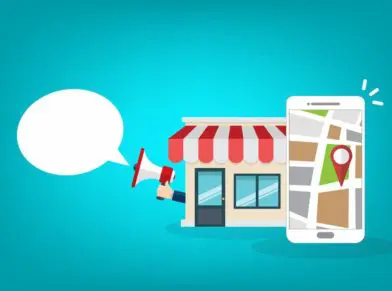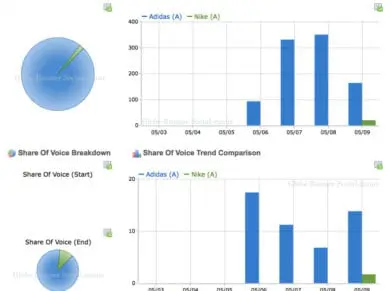HOW TO BEGIN A LOCAL SEO CAMPAIGN IN 3 EASY PHASES

The Necessary Steps to Achieve Rankings Quickly
Starting a local SEO campaign could not be a more exciting, yet important time. Whether you are conducting a campaign for a client or going to take on the effort yourself, there can be an overwhelming number of steps and ‘hidden tips’. Read on, as all is revealed in this guide toward getting ranked quickly in the local pack and generating traffic.
Phase 1: Research and Prep
The very first phase in any successful local SEO campaign is to lock down the NAP (Name, Address, Phone) and other business details. NAP consistency is one of the most critical elements of ranking in local search results. View all the local ranking factors for 2014. Create a spreadsheet, ideally in Google Drive with a sheet for NAP Data. You can share with the business owner and in real time, they can view all the updates.
Name
Use the legal name of the business. For very small and local businesses, make sure they have gone through the steps to register Doing Business As Name (DBA). It’s not surprising to find many businesses that haven’t and some states don’t require it. Using the legal name in citations is important, as several directories will pull data from the DBA or legal name filed with the state.
Don’t add keywords to a business name unless it is the legal name of a business. Although, keywords in business names are one of the top local ranking factors. If you’re building a brand new business and have yet to invest in the brand, consider changing the legal company name or “Doing Business As” and add keywords. The only exception is for multi-location businesses, add south, north, or the city name to the company name to differentiate it from other locations in the same area.
The criteria for one of the most strategic and strict citation sites, Acxiom includes the following:
NOTE: You will need the following documentation to validate your business. We do not accept documents obtained or scanned from Internet sites or W-9 Forms. This documentation must be submitted with account information or your listing will be denied and you will have to reenter the information and resubmit.
*** BUSINESS NAME AND ADDRESS ON DOCUMENTATION MUST MATCH TO YOUR REGISTRATION REQUEST
- Federal Tax License Letter *submit the letter that includes your ID#, name, address and/or phone number of business
- State, County, or City Business License or Sales Tax License
- Doing Business As License
- Fictitious Name Registration
One informative blog post goes over the importance of limiting the length of your business name. That’s right, don’t create a name that generally is longer than 40 characters or you won’t be able to add it to many citation directories, including Acxiom. Abbreviating the name is not an option, as again consistency on every directory is crucial.
Address
Just as crucial is the address of the business. Always check with the USPS for the official address and proper formatting. While it’s been proven that small differences such as STE and #, which both represent suite don’t affect local rankings, larger discrepancies do. Be consistent, by adding the correct address to the spreadsheet you’ll be sure to copy it properly every time.
Phone
Always use a local phone number as the primary, add 1800 numbers or specific department numbers to additional fields available, but always use a local phone number that is truly a business phone. I had a client that told me her main business phone number, when I discovered later the number although local, was a cell phone. Always validate what your clients won’t tell you and check if it’s a business phone.
Other Business Information
In your NAP spreadsheet, also lock down the following (by getting approval on all details)
1. NAP (Name of Business, Address and Phone Number). Also add to the spreadsheet (website URL, social media URL’s, company email address with a domain name such as sa***@*********me.com, and 1800 numbers and other contact details. For a multi-location business, using a location specific URL has a bigger impact. It ensures the data between the multiple locations is unique and does affect rankings.
2. Categories. One of the most important areas of ranking locally is choosing accurate categories for a business. Max out all related categories, usually 5 for most citations. Think of different ways to call your service or work, and start board and go narrow. For example, a real estate brokerage might use the following categories: (Apartment Rental Agency, Real Estate Brokerage, Real Estate Brokers, Condominium Rental Agency, Real Estate Rental Agency, Apartment Finder & Rental Service). Category diversity is also important). You can use a tool to find new categories, I find that throughout a campaign, you’ll find new categories just by using different citation sites. Categories aren’t universal, but realize the more times you use a category in a citation, the more often you are to rank for that category term.
3. Approved Business Hours (Tip on 24/7 hour businesses. Google doesn’t enjoy displaying hours for a business as open 24 hours. A representative told me it can trigger a listing for further review, and even be removed or unverified. Unless a business has an office with a secretary at a desk, 24 hours a day, they prefer you specify normal office hours. Many citations on other sites allow for a checkbox on 24/7 and normal office hours. For Google, just add to the additional detail section)
4. Approved Payment Information
5. All languages spoken by employees
6. Year established. (This may be an area of contention at some businesses. I usually err on the side of the earlier, the better as customers do place trust in more established businesses, but don’t make up an earlier date. Some businesses may choose to take the year of a business they acquired. A business that has a history of opening and closing may also choose the first date they opened their doors.
7. Approved associations (Chambers of commerce, Inc500, local industry chapters)
8. Approved certifications (gather detail on all areas of employees, what certifications to employees have that can boost the credibility of the business?)
9. Short and long description. Write a unique paragraph for a short business description and multiple paragraphs for a long description. Include keywords in the copy, category keywords work well too… On Google + make sure to hyperlink to important areas on your website. For a local business with high competition, rewrite the description for each major citation. Otherwise the content is duplicated and isn’t as valuable.
10. Approved company logo and pictures.. For a service business, get logos of partners, vendors, company logo, the team, the office location. For product based businesses, photos become even more important and easier. Show your product in an engaging way, research has discovered local businesses with pictures get 60% more clicks. Use descriptive and keyword rich file names on images and include alt text.
Phase 2: Cleanup & Build
After gathering the above information in Google Drive, it’s time to begin cleanup. This will be the most time consuming phase of your local SEO campaign. If you’re starting a campaign for a new business (you have zero citations or websites online that reference you or your client’s business location), you’re at a much better starting point. For everyone else, assume the worst. Don’t skim through the search for duplicates, incorrect data, missing information and more. You’re goal is to find and catalog all unique problems (ideally in a spreadsheet). The name, address and phone, any and all deviations, should be recorded. Later you’ll use this list to search for more problems.
Begin with asking the business owner for any and all old phone numbers and location addresses. You should by now have the legal company name as well as any company locations. Don’t use the citation sites for searches. Many are poorly designed and can’t compete with Google. Use Google to find problems in the following ways. For the sake of the example, let’s say my business has the following NAP and I’m looking for problems on yellowpages.com.Pete’s Bakery4321 50th Street#254Chicago, Il 01234325-333-5743
- search for “site: yellowpages.com 325-333-5743”
This will help find businesses that share the same phone number regardless of name or address. They may be misspellings of Pete’s Bakery, duplicates of the address or even a completely unrelated business. Either way, any business that shares your phone number that isn’t the same entity should be resolved. Reach out to the owners if still open, or remove the entry. Sometimes I’ve even claimed a business, only to change the phone number to 111-111-1111.
- search for “site: yellowpages.com Pete’s Bakery Chicago”
This will find problems with the address, duplicates and the phone number. Often it’s an old number, a tracking number or even a 1800 number that is active on a listing.
Go through the list below of the most important local citations and check all for problems and duplicates first. Write down all unique addresses and phone numbers that are related to your business, you’ll use this list to check on all citation directories. Any new addresses, names or phone numbers you find, deserve a search on all existing directories.
You may find that none of the listings closely match the business. As you work through the problems, generally claim one of the listings and update it fully, remove all other duplicates. Although it is far easier to make an update with the original email and password, very rarely will clients have this information. Often speaking on the phone with support achieves a faster turnaround than an email. Review this handy guide for how to delete duplicates on popular directories. Add new listings that aren’t featured on the site, but triple check that they aren’t listed under the wrong name, phone number or address.
When you claim citations, use a generic or branded company Gmail account. It’s ideal to have this email not tied to anyone’s personal account. You will want ongoing access as many citations require email verification before making changes.
Most Important Local Citation Directories
| Citation Directory | Type | How to Claim |
| Google + | Search Engine | Google Places, requires postcard verification |
| Yahoo | Search Engine | Update the data aggregators, over time Yahoo will update. Or pay for an update. |
| Bing | Search Engine | Requires email confirmation, postcard or contact support |
| InfoUSA/Express Update | Data Aggregator | Requires phone verification |
| Neustar/Localeze | Data Aggregator | Create an account, claim and update |
| Acxiom | Data Aggregator | Requires phone and document verification |
| Factual | Data Aggregator | Contact support |
| Yellow Pages | Review Site | Requires phone verification |
| Yelp | Review Site | Difficult process to remove and update without login, contact support |
| Angie’s List | Review Site | Contact support |
| Superpages | Review Site | Contact support for listings already claimed |
| HotFrog | Directory Site | Contact support |
| Manta | Directory Site | Call support |
| CitySearch | Review Site | Requires phone verification |
| Best of the Web | Directory Site | Paid |
| Foursquare | Social Media | Requires voicemail verification |
| Social Media | Contact support | |
| Social Media | Contact support | |
| Social Media | Contact support | |
| Mojopages | Directory Site | Contact support |
| YellowBook 360 (hibu) | Directory Site | Call support |
| Merchant Circle | Review Site | Contact support |
| Yellowbot | Review Site | Requires phone verification |
| BBB.org | Complaint Site | Requires payment |
| dexknows | Review Site | Owns Superpages, but process is still separate. Must call support. |
| Dunn & Bradstreet | Data Aggregator | Requires business owner verification |
| ibegin | Directory Site | Requires phone verification |
Phase 3: Growth and Ranking
After fixing all issues on the most popular directory sites, it’s time to expand to any site that lists the business either correctly or incorrectly. Claim and update and use the techniques listed above to find all mentions of the business. Adding to Google Drive creates an easy way for a business to check in real time and see all the new citations and progress made.
Next, leverage software and there are many options available. I’ve used Whitespark and Brightlocal, but realize there are other solutions. Most do the same or similar functions. They track (although with some inaccuracies) all the citation directories where a business is located with opportunities to increase and add the business to new directories. They also help compare and track over time your competitors ranking in local search with your own business. There are some steps to use this software effectively:
1. Identify the terms that trigger the local pack for your geographic area. As you search for keywords you’ll often find other sites ranking that allow for a citation. Also note which terms are most aligned with your business and the search volume.
2. When looking at a local pack, there are two areas that can influence click through rate. One is position or where a business appears in the local pack. A higher position is better, although a business with reviews can outstrip traffic of higher results. Track using software the position of each keyword. 8th is just shy of appearing in the local pack, 7 is at the end for most terms.
3. Look for new opportunities routinely, especially in regards to competition. Where are they listed and perform and problems in search. Occasionally a data aggregator can receive the wrong information or create duplicate listings which require removal. Monitor and continue to optimize the growth of citations and the increase in rankings.
Review Strategy
With corrected and consistent citations and eventually, rankings, put a review strategy in place to increase CTR. Identify the top sites to receive a review, most of the time it should include Google +, Yelp and an industry specific site. Use software such as customer lobby, which can make reviews easier. Or simply put a process in place that asks every customer to review your business. This could be through stickers and visual reminders at your retail location, a conversation you have in person after completion of a service, or an automated email for an online business.
You can generate several quick reviews by simply sending an email to your marketing database. But for true success, put in place a process and realize it’s important!
Corey Barnett is a Globe Runner Online Marketing Specialist. Follow him on Google Plus. Corey also frequently writes on his blog – cleverlyengaged.com/blog

